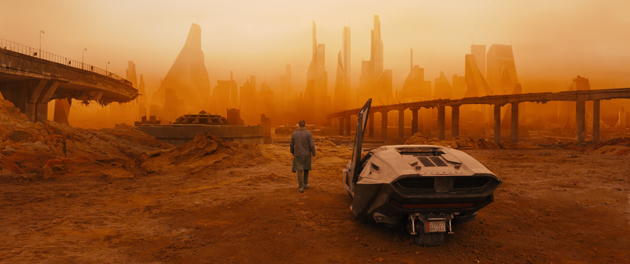Dennis Gassner

AS: What did you learn from Dean Tavoularis?
DG: Well, Dean had worked at Disney before he made Bonnie and Clyde. As a young man he was an in-betweener. The master animators would draw the keyframes and he would do all the in-between ones. What he learned was how to tell a story. Draw the story in between the two moments. So structurally he had storytelling in his DNA.
After we did Apocalypse Now we went to do a period film set in 1927 San Francisco. Wim Wenders came to the United States to do a film about Dashiell Hammett the writer. I remember starting the process with Dean. He put 3″x5″ hand-written cards on the wall, tracking the entire film from the first scene to the last scene. It was storytelling in words that we applied images to.
AS: Nathan Crowley also told me about creating a wall showing the arc of a film’s story visually.
DG: Nathan had been Alex Tavoularis’ art director! Alex had the same system. In fact, Nathan and I were at the Academy Awards one year and we talked about it and he said of course it all came from Dean. It’s the way that the movie company can see the film first. In a visual narrative form.
AS: Is the wall imagery that you cull from all different sources?
DG: It starts out with research. It starts with the script and then you break the script down. You apply visuals from your research to the literal form. Like scene one of Bladerunner 2049: a flight from LA. The solar panels start to trickle off as they go into deeper desert. As you get away from LA you get a science fiction feeling graphically. Knowing what it was specifically didn’t matter because it had a feeling. Method design where it has to resonate emotionally. That’s what Dean had. Dean didn’t really talk a lot about it. But what I saw was emotion start to hit the wall. Everyone in the art department had it because they’d done so many films with him. There was this kind of shorthand. I just sat there and listened. Dean always had exquisite taste. Emotional taste.
AS: Emotion was a big part of it?
DG: The emotion was most of it. A film can look like a dystopian world but there’s always an emotional context behind it. The emotion applies itself in a structure. And then from structure comes the color. The set decorator’s input into the emotional side is a synchronistic thing too. You find someone who is like-minded and has a great sense of style.
AS: Some people talk about cracking the code of a movie. They do a lot of research and at some point they “crack the code”. Do you ever feel there is a certain “a-ha moment”?
DG: I do that before I even start. When I’m meeting with the director. The first thing after we have our chit-chat. I said to Denis [Villeneuve, Bladerunner 2049 director], If you can imagine one word that would describe the film what would that be? And Denis kind of paused and he said, Brutality. What are we going to do with that word? We’re going to take it and start with the Spinner from the original film. We spent a lot of time developing the new Spinner. Ryan was in it more than any other set. We wanted to honor the first film but the original Syd Mead Spinner had a softness to it.
Thanks to Tom Lisowski (alias Art Stars) and Dennis Gassner for this look into a fascinating passionate world. I like that Gassner says he IS a director, and shows how that is true.